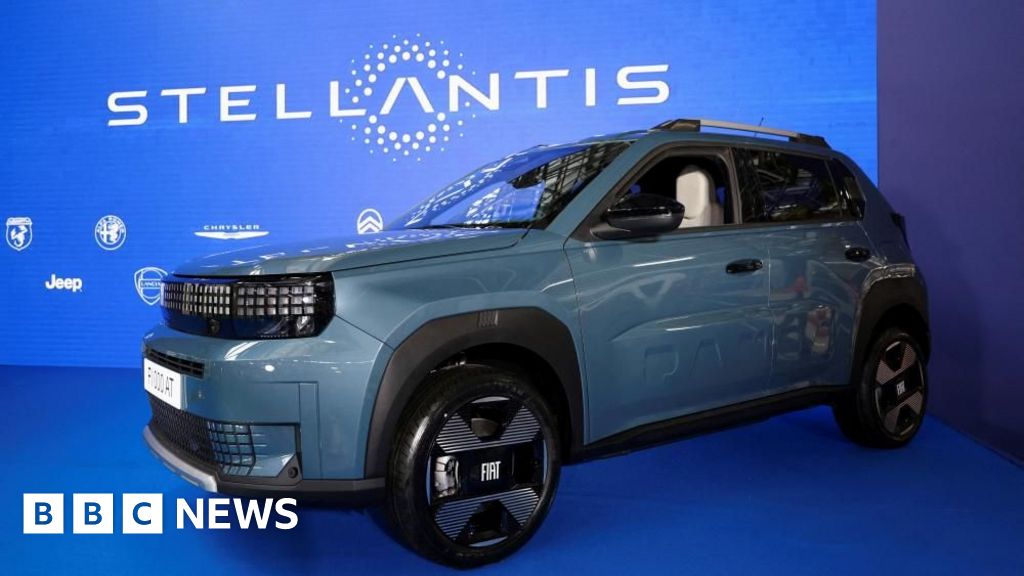GM's $1.6B EV Charge Signals Strategy Pivot, Ford Comparison
#gm #ev #automotive_industry #industry_shifts #business_strategy

GM’s $1.6 Billion Charge Reflects EV Strategy Shift
General Motors announced a significant $1.6 billion charge linked to scaling back its electric vehicle (EV) ambitions, marking a major pivot in its EV strategy. This move comes amid broader industry adjustments as automakers reassess the pace and scale of their EV investments to better align with market demands and profitability goals.
Comparisons to Industry Rivals
GM’s decision echoes a similar charge taken by Ford Motor more than a year ago, when Ford reported a $1.9 billion impact due to changes in its EV plans. These charges highlight the costly realities and challenges of transitioning to electric fleets, including supply chain issues, shifting consumer preferences, and evolving regulatory landscapes.
Long-Term Implications for the EV Market
While these financial adjustments signal short-term setbacks, they also suggest a strategic recalibration. Both GM and Ford appear intent on refining their EV roadmaps to balance innovation with sustainable growth, potentially influencing how other automakers approach their electric futures.
About the Organizations Mentioned
General Motors
General Motors (GM) is a leading American multinational corporation that has been a driving force in the automotive industry for over a century. Founded in 1908 by William C. Durant, GM began as a holding company for Buick and quickly expanded to include other prominent brands like Cadillac, Oldsmobile, and Chevrolet[1][3]. Durant's vision was instrumental in transforming GM into a global powerhouse, though he faced challenges, including being forced out in 1920 and later returning to co-found Chevrolet in 1911[2][3]. Under the leadership of Alfred P. Sloan, GM reorganized into a decentralized management structure, pioneering annual style changes and consumer financing innovations[1]. The company's impact on the automotive sector has been profound, introducing the electric starter and being a model for large-scale industrial enterprises[1][3]. GM's legacy includes a vast array of brands, though some like Oldsmobile and Pontiac have been discontinued[4]. In recent decades, GM faced significant challenges, including bankruptcy in 2009, but it has since recovered and is now focused on electric and autonomous vehicles[5]. Under CEO Mary Barra, GM has committed to a future of sustainable transportation, aiming for zero crashes, zero emissions, and zero congestion[6]. Today, GM operates globally, manufacturing vehicles in 35 countries and employing thousands worldwide[4]. Notable aspects of GM include its commitment to innovation and its role in shaping American industrial history. The company continues to evolve, investing heavily in electric vehicles and self-driving technology. As a leader in the automotive industry, GM remains a significant player in both business and technology, shaping the future of transportation with its pioneering spirit and technological advancements.
Ford Motor
Ford Motor Company, founded by Henry Ford in 1903 in Dearborn, Michigan, is a leading global automobile manufacturer known for revolutionizing the auto industry and making car ownership accessible to the masses[4][5][9]. Its core business includes designing, manufacturing, marketing, and servicing a wide range of vehicles, including cars, trucks, SUVs, and electric vehicles, under brands such as Ford and Lincoln[1]. A defining moment in Ford’s history was the introduction of the Model T in 1908, which epitomized affordability, durability, and ease of maintenance. To mass-produce the Model T efficiently, Ford pioneered the moving assembly line in 1913, drastically reducing production time and costs. This innovation not only enabled Ford to lower prices but also transformed manufacturing globally, influencing industries beyond automotive[9]. By 1927, Ford had produced over 15 million Model Ts, cementing its dominance in the market[2]. Ford's expansion was rapid and international, establishing more than 20 overseas plants by the late 1920s in regions including Europe, Latin America, Asia, and Australia[2]. The company diversified its portfolio by acquiring the luxury Lincoln brand in 1922 and introducing Mercury in 1938, targeting mid-priced markets between Ford and Lincoln[2]. Beyond manufacturing, Ford significantly impacted labor practices with the introduction of the $5-a-day wage in 1914, which was nearly double the average at the time. This move helped build a consumer-driven economy and contributed to the growth of the American middle class[8]. Today, Ford remains a major player in the automotive industry, focusing on innovation in electric vehicles, smart mobility, and sustainability while maintaining a legacy of manufacturing excellence and cultural influence that spans over a century[1][8]. Its history reflects a blend of technical innovation, strategic expansion, and social impact, making it a cornerstone of American industry and a global automotive icon.







